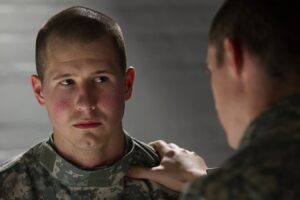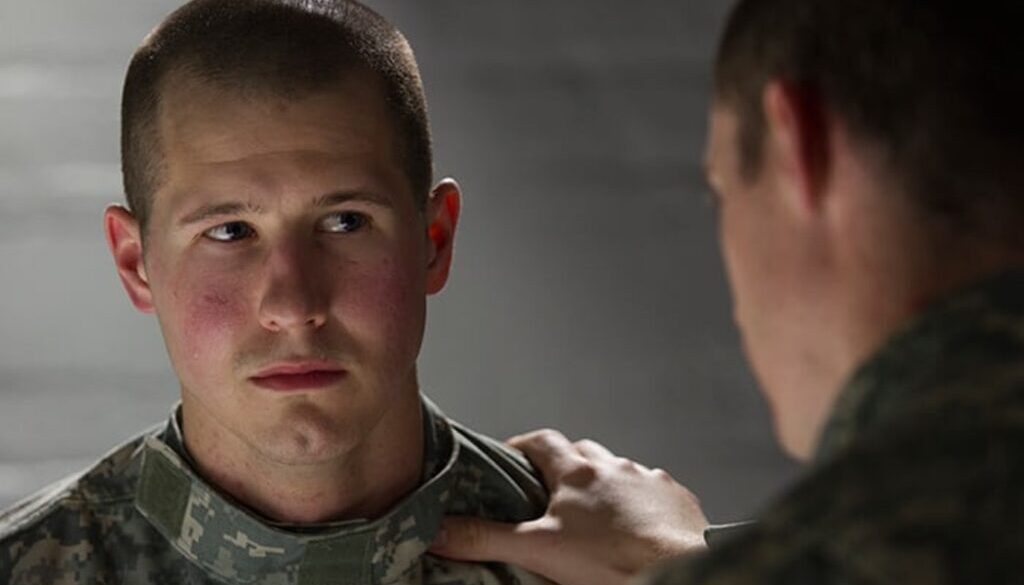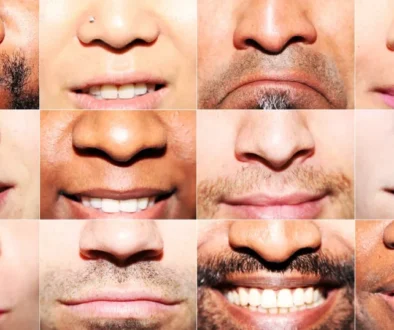The Far-reaching Effects of PTSD in Veterans
By

Post-traumatic stress disorder (PTSD) is a psychological condition caused by exposure to traumatic events that are outside the normal range of human experience. These events shake the foundation that our mental health is built on and create a disconnect between the victim’s expectations and reality. The effects of PTSD in veterans are not always visible. This disconnect causes sufferers to lose faith in the stability and normality of their world. Without this faith the smallest task becomes harder. The effects of PTSD create a deep distrust of natural laws and, in the worst cases, cause a complete loss of function as the sufferer retreats into anxiety and depression.
The U.S. Department of Veterans Affairs reports that incidence of post-traumatic stress disorder among veteran varies depending on which conflict a service member was involved with.
- About 11 to 20 out of every 100 veterans (or between 11 and 20%) who served in operations Iraqi Freedom and Enduring Freedom have PTSD in a given year.
- About 12 out of every 100 Gulf War Veterans (or 12%) have PTSD in a given year.
- About 15 out of every 100 Vietnam veterans (15%) were currently diagnosed with PTSD when the most recent study of them (the National Vietnam Veteran Readjustment Study) was conducted in the late 1980s. It is believed that 30% of Vietnam veterans have had PTSD in their lifetime.
- Current populations may have higher rates of PTSD than veterans returning from World War I and World War II in part because the nature of warfare has changed significantly since the mid-20th century, and there are new pressures and challenges current day veterans’ experience. Ken Yeager, director of the Stress, Trauma and Resilience (STAR) Program at The Ohio State University Wexner Medical Center notes that “They aren’t returning with a unanimous victory,” such as WWI and WWII vets did, “and with each subsequent group – Korea, Vietnam, the Gulf war, OEF, OIF – there were fewer and fewer individuals who experienced active combat.” This means a smaller pool of people who can relate to the returning veterans’ experiences. They don’t have many people to speak to about their experiences, and so when they come back, they’re more hyper-vigilant, they have trouble trusting, they attempt to control situations, they shut down and become less open and have less intimacy just in conversations with others”, because others can’t really understand what they’ve seen and done.
- In addition, simple speed of travel these days may also be working against some veterans’ natural resiliency – after the World Wars, it took longer to get home, ie on ships, where they had more time to decompress from where they had been; time to write letters and process through things, and likely surrounded by other soldiers who had very similar experiences. They could spend time talking to each other and working through what they had witnessed. Compare this with modern day veterans who get on a plane and are back in the US within 48 to 72 hours.
- Another issue facing many veterans is that they come home to high-stress jobs that continue to put them in the line of fire. Many of our current law enforcement and police and fire fighters are veterans. The rules of engagement for law enforcement and emergency personnel are different from those of war, and sometimes it can be difficult to know what’s appropriate in what setting and what’s not, and that can lead to further stress for some people.
- Sadly, the worst outcome of PTSD, namely suicide, is also increasing among veterans. The VA reports that there were more than 6,000 veteran suicides each year from 2008 through 2016, and from 2005 to 2016, veteran and non-veteran adult suicide rates increased 25.9% and 20.6% respectively
- These troubling statistics point to another complication of life after war for veterans – a lack of support and connection to others. You never feel more alive or more connected with people than you do when you’re in the combat field with their neurotransmitters firing at a very high rate. When they return home, they struggle with the challenges of where to find that rush again, that sense of feeling “alive” again?
- The heightened danger of living in a combat zone leads to a release of many powerful hormones and chemicals in the brain and body, causing powerful changes to the brain and how people respond to everything. “It’s not just a change to their thought process. It also involves cortisol levels, hormone stress responses, blood pressure responses, heart rate increases and other hormones that are released like oxytocin, which is widely touted as the hug neurotransmitter. When you have oxytocin, dopamine and serotonin all working at very high levels, the individual feels very connected to their combat buddies, which they should be. But when they return home, that’s absent and it’s missed and it can very quickly then lead to issues of depression. It can very quickly lead to feelings of isolation that one doesn’t fit in,” and some people will try to fill that void with fast cars, alcohol, substance abuse or other potentially dangerous or self-destructive activities. “They want that adrenaline rush again”.
- This also may lead some veterans “to go back for recurrent tours of duty, which can further set the spiral and keep it going more and more out of control.”
Symptoms of PTSD may include:
- Re-experiencing the initial trauma via intruisve thoughts, unwanted recollections and memories, nightmares and flashbacks.
- Avoidance of certain activities, particularly difficult emotions and places that remind the individual of the trauma.
- Increased arousal, such as feeling anxious or on edge all the time, being jumpy, having difficulty sleeping, being irritable, having angry outbursts or engaging in self-destructive behaviors.
- Negative changes in mood and thinking that can include mood swings, difficulty focusing or concentrating, depression, isolation from friends and family and generalized apathy.
The symptoms of PTSD are present in all trauma victims to some degree. What sets PTSD apart from trauma is the length of the effects. The human mind is a highly adaptable organ and most victims of trauma eventually cope with the feelings of helplessness and are able to reconnect with their life. The effects of PTSD, however, have a longer term effect. Many of the effects of PTSD make it difficult for the sufferers to recognize it in themselves and, even when they do, avoiding treatment is not unusual. Between the depression and the disconnect with normal life, many victims just don’t see the value of treatment.
In addition to the physical scars, many of our veterans returning from war zones carry mental and emotional scars that can affect them for years or their entire life. Furthermore, tThe effects of PTSD aren’t just a burden carried by the veterans, their families and friends have to learn to cope with PTSD, as well.
On a good note, there are several treatments and programs to help veterans with PTSD that are supported by research. These evidence-based approaches include:
Trauma-informed care
Focusing on how trauma can affect all aspects of a person’s life, trauma-informed care is an umbrella term used to describe the person-centered approach that aims to improve wellness and functioning instead of simply focusing on treating symptoms. People may undergo a wide range of therapies that can include trauma-based psychotherapy (talk therapy on an individual or group basis), prolonged exposure therapy (PE), cognitive processing therapy (CPT), or EMDR (eye movement desensitization and reprocessing).
Prolonged Exposure Therapy
This form of treatment has the most scientific evidence to support its usefulness. You receive between 10 and 12 sessions that last 90 minutes each and participate in psychoeducation, breath retraining, imaginal exposure, and in vivo exposure. People are educated about PTSD and its symptoms, learn breathing techniques to promote relaxation, and undergo specific imaginary exposure exercises to become habituated to the memory of the trauma. You may repeatedly tell your story or be asked to confront your fears associated with the trauma in different ways.
Cognitive Behavioral Therapy (CBT)
CBT helps you understand why you think and react to things in the way that you do and helps you identify your triggers.8 CBT has been demonstrated to be effective at treating PTSD in service members through a variety of techniques in which you learn to identify and replace unhealthy thoughts and behaviors with healthier ones.
Cognitive Processing Therapy (CPT)
CPT also has significant scientific evidence to support its benefits and includes elements of CBT. You receive psychoeducation about PTSD, participate in cognitive restructuring (identifying and changing inaccurate or negative associations and thoughts about the trauma), and undergo exposure exercises. You usually receive 12 one-hour-long sessions.
Eye Movement Desensitization and Reprocessing
While this approach is widely used for PTSD, research has shown mixed results, although a number of studies have demonstrated some promising benefits, such as reduced symptoms. In this form of treatment, a therapist assists you with recalling the trauma while making specific sensory movements, such as eye movements or hand tapping.
Pharmacological Treatment
Medication for veterans with PTSD could help alleviate or control some of your symptoms. The U.S. Department of Veterans Affairs and Department of Defense recommend the use of specific medications to treat PTSD, namely paroxetine and sertraline, which are antidepressants known as SSRIs, or selective serotonin reuptake inhibitors.
Post-Deployment “Battle Briefing”
This approach was developed by the Army to help reduce PTSD symptoms in newly returned soldiers. During this time, you learn effective coping skills to help address anger management, stress, insomnia, and other symptoms, while also working on issues like social isolation.
Complementary and Alternative Practices (CAM)
CAM approaches that have demonstrated some clinical benefits for returning service members with PTSD include meditation; mind-body practices like yoga; and biofeedback, a form of treatment that involves learning to monitor and control bodily functions like heart rate and blood pressure through the help of electrical sensors. One form of biofeedback that may be useful for PTSD is cardiac coherence training (a specific treatment that involves using biofeedback to control your heart rate to induce relaxation).
Art/Music Therapy
One study showed the benefits of mask-making in an art therapy context for service members with PTSD. Making masks helped participants represent their challenges, struggles, and experiences in a visual manner, which benefitted their recovery. The healing power of music can also help soldiers cope. A nonprofit called Guitars for Vets creates a community amongst vets by giving them free guitars and teaching them to play. Here they can find solace in the songs they love and the songs they have yet to write and this organization has already provided 4000 free guitars to military vets and offered 40,000 playing lessons.
If you know a vet in need going through PTSD, check out these valuable resources:
Resources For Vets:
- The Sidran Institute is a nonprofit organization dedicated to helping people with trauma find and locate trauma-related resources by providing referrals to therapists, treatment centers, and organizations throughout the country.
- The Military Crisis Line is a free, confidential service for all members of the military who require support. You can call the hotline or visit the website to chat with a qualified VA responder online.
- The U.S. Department of Veterans Affairs PTSD Treatment Locator allows you to search for a specialized PTSD treatment program by state.
- VET to VET Assistance: call 888-777-4443
- https://guitars4vets.org/about-us/
Sources:
National Veterans Foundation
U.S. Department of Veterans Affairs
https://health.usnews.com/conditions/mental-health/ptsd/articles/ptsd-veterans-statistics
https://www.research.va.gov/topics/ptsd.cfm



